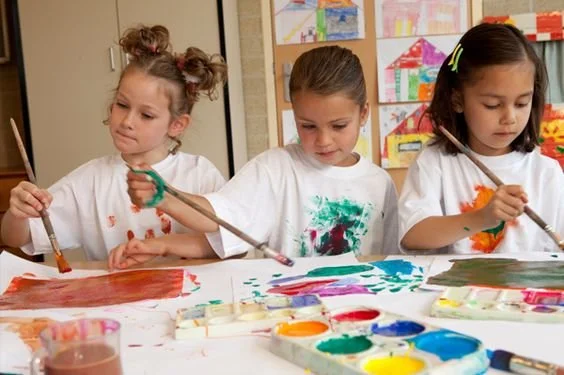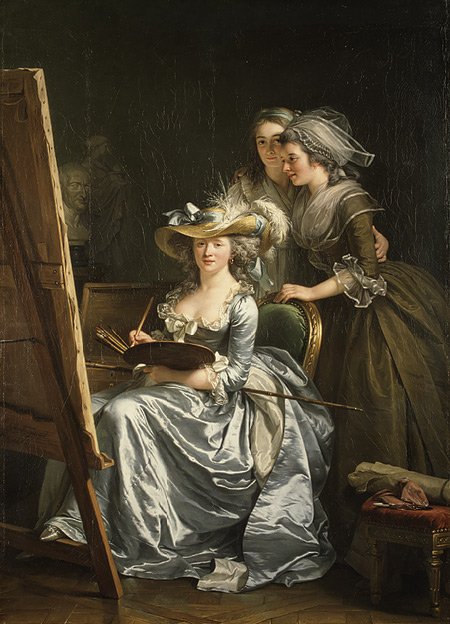How seeing what delights young children can help us to establish what art is, and develop teaching principles for all art students, young and old.
I have recently observed the work created by children who attend some after-school classes offered in London (Art-K in Fulham). There is no religious or even classical impetus behind these classes. They were offered as an after-school activity and the age range is 6 - 9 years old.
The two children that I observed and spoke to particularly wanted to do the classes because they liked to draw and paint. Interestingly, even though the teachers had a background in modern art and used this as a selling pitch (but which made me a little wary of what they were offering), they provided classes that stimulated the children's imagination.
My interest was in relation to a recent request to assist in the design of a program of a K-12 school that focussed on sacred art, rather like a choir school focusses on training its students to sing. As described in an earlier posting, here.
I was curious to see how they responded to the various projects set for them. I think that the results will not be a surprise. This is that they enjoyed learning the techniques of papier-mâché, poster paint, and drawing in crayons. Furthermore, they delighted in imitation. Whether it is an object that they see; or a picture that is an idea in their minds - perhaps a composite object or person from their imagination. If it is a decorative pattern, the delight is in the skill of creating something that corresponds to the idea.
I think that this for me now, is one governing principle for the training of art, that will then have application in sacred art as the training develops. It is important for teaching young children in particular that we can find ways of introducing variety and interest which probably means that even if the goal is to form sacred artists, we don’t want every piece of art they produce to be explicitly religious!
This is what occurs to me now. That every project set in an art school should be aimed at the following ends:
The mastery of a skill
The project should be clearly set out and should be a well-chosen subject. We don’t need classically beautiful subjects here. Provided we pick something that is not overtly evil, it will be good. Ideally, the subject will be something that interests the student and with children, it might be characters from their favorite books or films, for example.
The project should be one of imitation of either:
An observed reality - that is directly copying an object or another piece of art.
A good idea and which the student can describe beforehand. This will exercise the imagination.
Even the youngest child will delight in being encouraged to follow these principles. The youngest age that this can work is that the child must be of an age at which they can articulate an idea as a goal for their painting.
It is part of the role of the teacher always to consider the goodness of the idea and allow for as much variety and interest under this banner. It does say that an art teacher should be formed in the Faith so as to make such judgments discerningly, for we want as much variety as possible - not just overtly religious or classical subjects - without compromising on what is good.
A good idea represented well will be beautiful! It will delight the artist to produce it, and it will delight the rest of us to see it.
If we start the children off on these principles, then as they mature, they will be drawn to ever more sophisticated representations of the good.
Adélaïde Labille-Guiard, Self-Portrait with Two Pupils, 1785.




